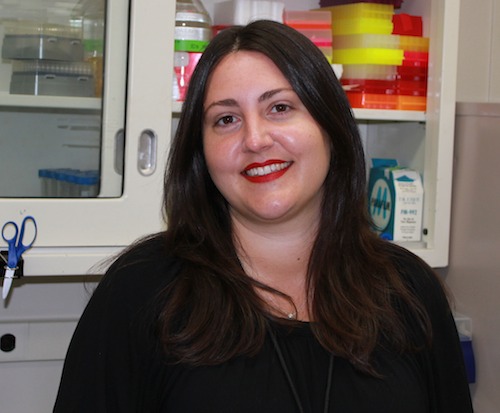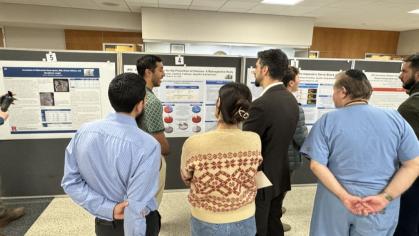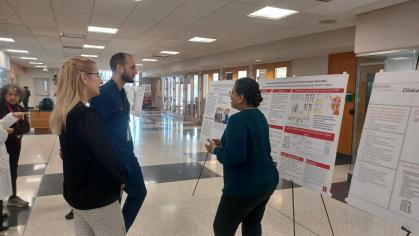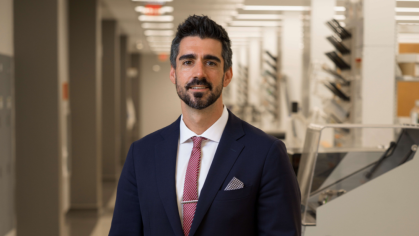Researchers win funds to explore bacterial 'communication'
Scientists used to think bacteria were dull organisms that reproduced on their own without responding to one another or their environment. As it turns out, they have intricate ways of communicating with each other and the microbial world around them.
RSDM researchers Carla Cugini and Vijay Parashar study how this happens, each seizing upon different organisms—and employing different methods—to explore how bacteria adapt to their hosts’ immune system. In 2014 both won $35,000 from the New Jersey Health Foundation, which funds biomedical research. The work of both has broader applications beyond dental disease.
Cugini, a molecular microbiologist, is examining how protein in the bacteria responsible for periodontitis strikes back against the immune system. She explores a bacterial protein called ApiA that has a dual role: it helps form biofilm and it fights off the body’s attempts to destroy it. Both functions are a product of the dialogue between the protein and the immune system, but few scientists have analyzed the mechanics of how it occurs.
Her research combines microbiology, genetics, and biochemistry to gain insight into the process. Her findings could someday result in therapies for periodontitis and a range of mucosal diseases.
Two RSDM researchers won grants last month from the New Jersey Health Foundation for studies that could help efforts to disable the bacteria responsible for a range of illnesses, from gingivitis to Lyme disease.
Parashar, a structural biologist, takes photos of organisms so small that they can’t even be seen under a microscope. He uses a technique called X-ray crystallography to build three-dimensional representations of submicroscopic cellular enzyme molecules so he can determine how they function.
He hopes his research will aid in developing an alternative to present-day antibiotics, which eradicate essential bacteria along with those that cause illness, driving them to develop the tactics that lead to drug resistance.
Parashar’s study delves into the mechanics of how certain enzymes trigger biofilm, or plaque, formation in bacteria, including Streptococcus mutans, a leading causative agent in dental caries. According to Parashar, if scientists can decode the bacteria’s signaling process, they might be able to abort the chain of events that results in disease.
“Then you don’t have to eradicate the bacteria—you’re designing a small molecule, a protein, that turns off the particular switch,” Parashar explains. “This way you stop bacteria from doing precisely what you don’t want them to do.”





